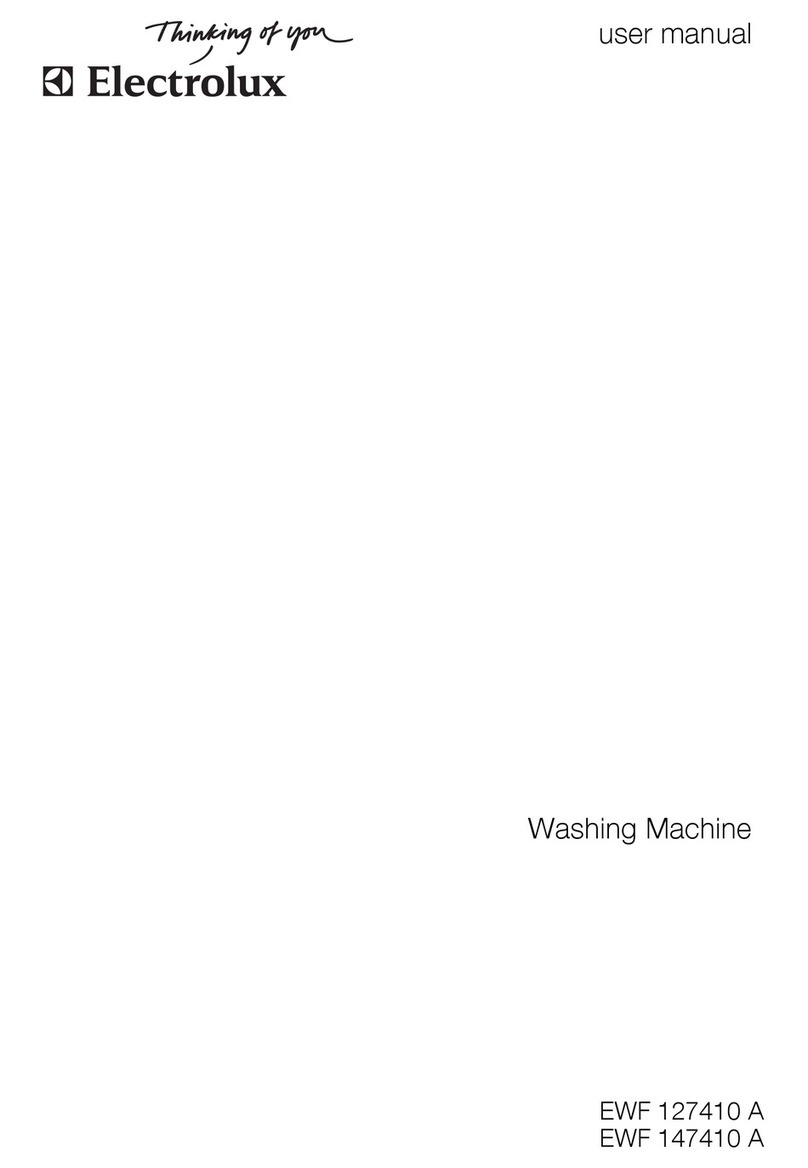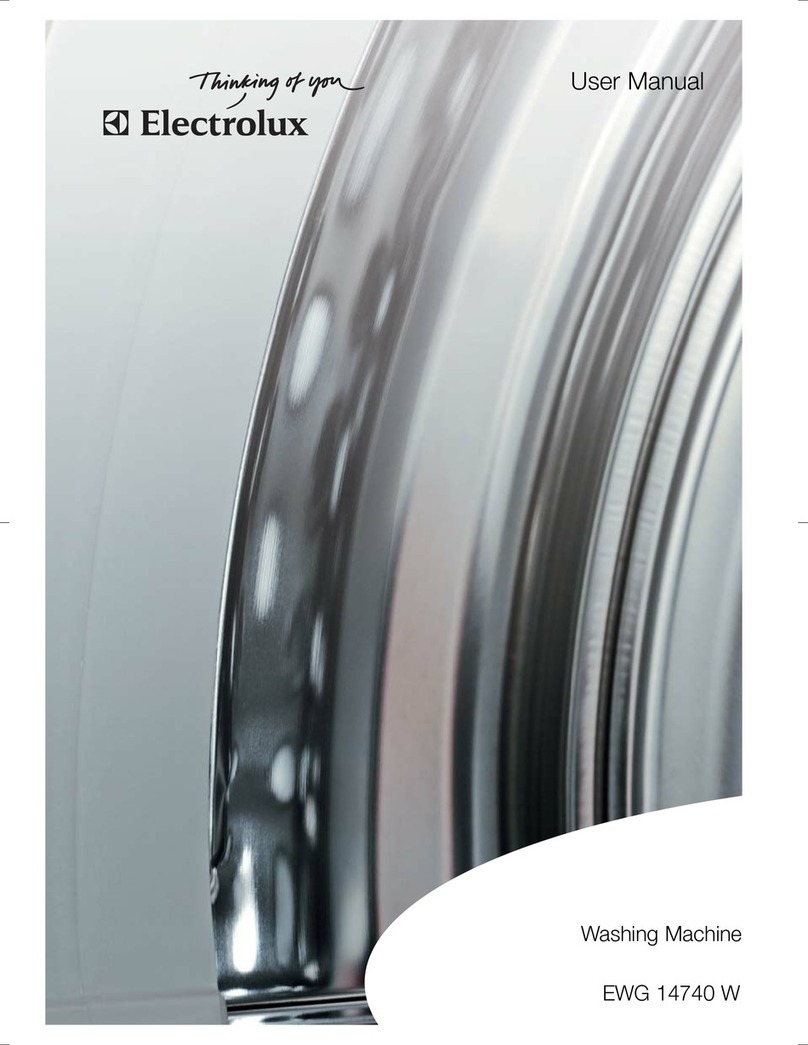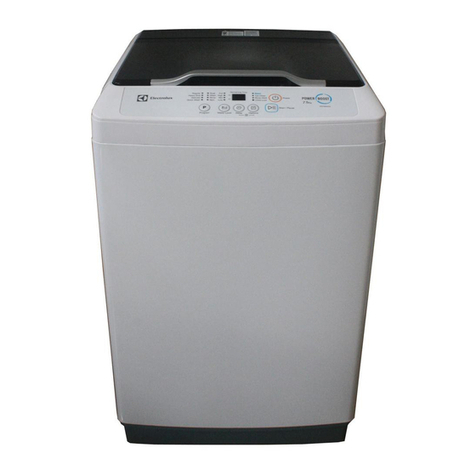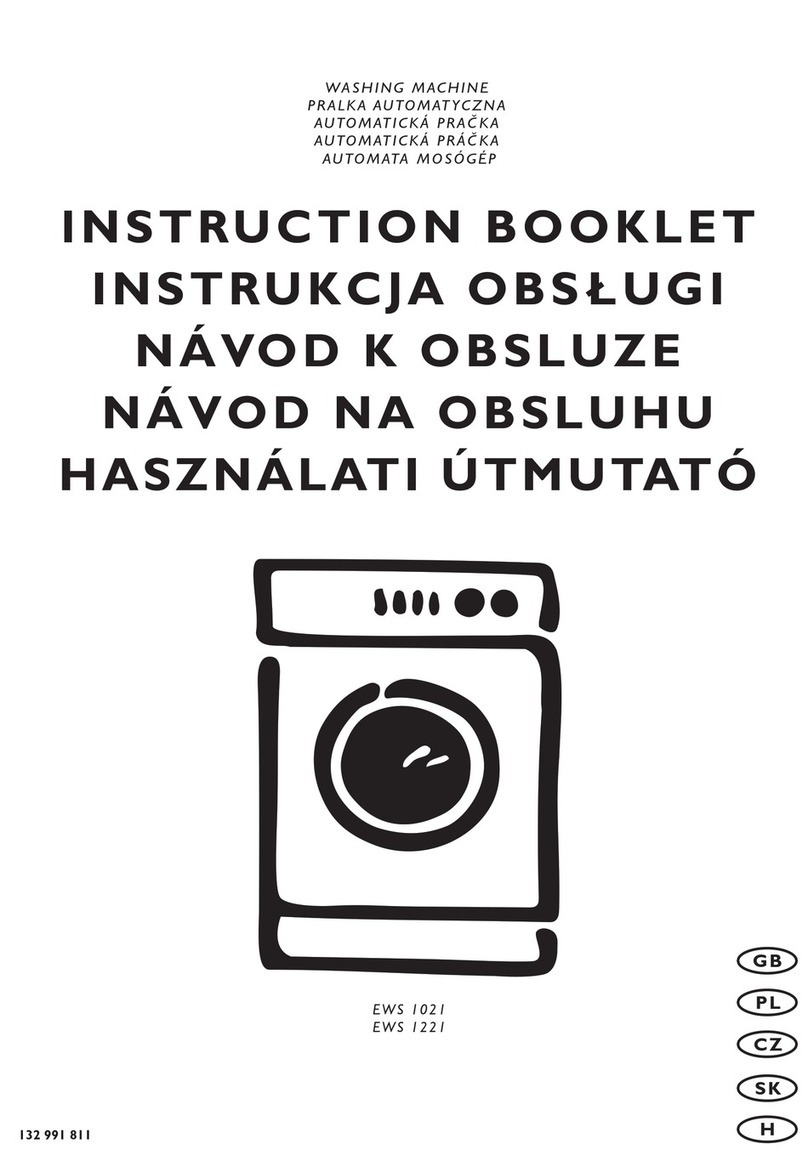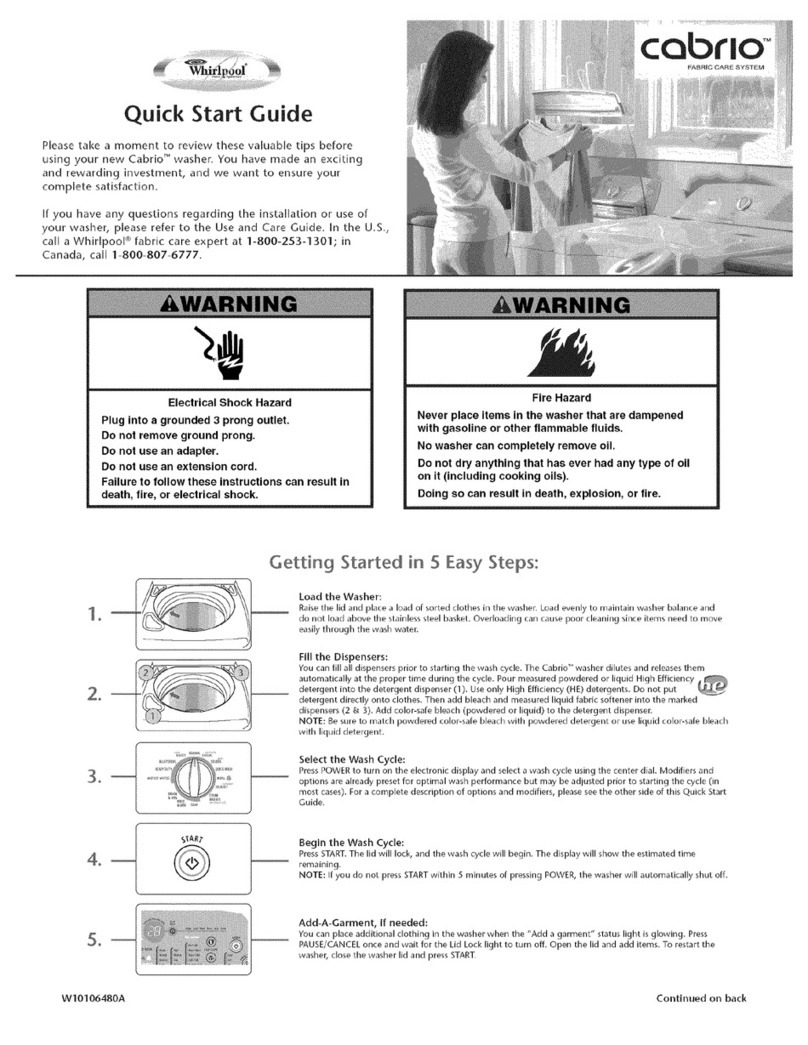- 5 -
A
Operatinginstructions
1. Place the laundry in the drum
lift up the lid of the machine,
open the drum with your two
hands by pressing the button A
and the two flapdoors till they
disengage,
introduce the laundry into the
drum ; close the drum and the lid
of the machine.
Becareful:beforeclosingthelidofyourmachine,makesure
that the drum flapdoors are correctly closed :
the two flapdoors fastened,
the button Apressed out.
2. Measure out the detergent
Measure out the amount of detergent recommended by the
manufacturerinthemain washcompartment( ).
Ifyouwishtocarryoutaprewash,pourtheamountrequiredinto
theprewashcompartment( ).
Do not exceed the MAX level.
3. Add the fabric softener
Pour the softener, if required, into the compartment marked
(). Do not exceed the MAX level.
4. Press the half load pushbutton " " if
required.
5. Select the programme
Choosetheprogrammeaccordingtothenatureandthedegree
of soil of the laundry.
Turn the programme selector clockwise to select the chosen
programme.
6. Starting of the programme
The ON/OFF pushbutton " " enables to switch on your
machine. The control lamp illuminates and the programme
starts.
7. At the end of the programme
When the selected programme is over, the machine stops
automatically.Thetimerknobstopsontheposition"I"forthe
cottonprogrammes.
Thesyntheticsprogrammesendbyarinsehold" "(waterin
the tub) in order to avoid the formation of creases. You can
finishtheseprogrammesbyaspin(programmeG)orbyadrain
(programmeM).DepresstheON/OFFpushbutton" "before
doingyourchoice.
Aftereachwash,depresstheON/OFFpushbutton" ".Press
offtheotherpushbuttonifnecessary;unplugthemachinefrom
the wall socket ; turn off the water tap.
Leave the lid open in order to air the washing machine.
Youareadvisednottoleaveyourlaundrytoolong,especially
when damp. Damp laundry produces moult and unpleasant
smells.
Moult stains cannot be removed.
Sort your laundry.
Studycarefullythechartinthisbookletexplainingthesymbols
used on clothes labels (see page 6).
Thefollowing points areparticularly important :
- a line under the bowl means that the garment cannot be
washedusingprogrammesforresistantfabricssuchascotton
andlinen;
- do not mix coloured garments with whites;
- anticrease materials like polyester/cotton should be treated
as synthetics;
- non-resistant fabrics like acrylic and most curtain materials
should be treated as delicate fabrics;
- the wool programme is designed specifically for pure new
wool.Othertypesofwoolandwoolmixturesmayshrinkorfelt
ifmachine-washed.
Woollen garments should be spun briefly immediately after
washing.
Prewash
Prewash is not normally necessary. Your new washing ma-
chine combined with modern detergents will give perfect
washing results without prewash, thus saving energy, time,
wateranddetergent.
However,whenthelaundryisparticularlydirty(forinstanceif
you have to wash mechanics' overalls or butchers' aprons),
you are advised to use prewash with a biological detergent.
HINTS ANDTIPS
Temperatures
Wesuggestthatwhitecottonandlinen,ifitisnotexcessively
soiled,canbewashedat60°insteadof90°C.Thereshouldbe
noreductioninperformance,buttherewillbeanenergysaving
ofapproximately30%.
Thesameappliestoalesserextenttofastcolouredgarments.
Theyusuallyrequireatemperatureof60°Cbutiftheyarenot
excessively dirty, you will have satisfactory results at 40°C.
Garments with non-fast colours should not be washed at
temperatures above 40°C. If fast and non-fast colours are
washedtogether, theyshould be treatedas non-fastcolours
andthereforethetemperatureshouldnotexceed40°C.
Resistant white and coloured synthetics can normally be
washed at 60°C but also in this case 40°C is sufficient if the
laundry is not excessively dirty.
Delicate synthetics, synthetics with non-fast colours and
woollengarmentsmustneverbewashedabove40°C.
How much laundry can be washed in one load?
Strictly speaking you should always weigh your laundry.
Thedrumwilltakeamaximumof5kgofcottonandlinen.For
synthetics and delicate fabrics, the maximum load is 2,5 kg
and for wool, 1 kg.
Asweighingcanbecomplicated,wesuggestyoutoestimate
the weight according to how full the drum is:
cotton and linen : drum full not too tighty packed
resistant synthetics : nomorethan 2/3of thedrum
delicate fabrics and wool : no more than 1/2 of the drum.
